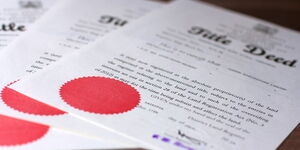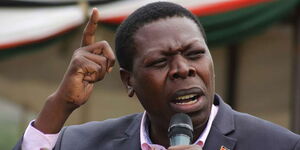20 years ago, what is now Chase Bank, was a small bank in Kisumu known as United Bank (Kenya) that was at the time under the receivership of the Central Bank of Kenya.
The new owners acquired a 60 per cent stake in the struggling financial institution, rebranded it and grew it to be the Chase Bank that was incidentally on Thursday, placed under receivership after it was unable to meet its financial obligation.
In the wake of disgruntled customers, the question many Kenyans are asking themselves is - what does being placed under receivership mean to the bank and its customers?
CBK stated that it had appointed Kenya Deposit Insurance Corporation (KDIC) to "manage, control and conduct the affairs and business of the institution". The financial regulator said that it had taken the measures to safeguard the interests of depositors, creditors and the public.
While under receivership, a financial institution remains closed until shareholders invest more capital to save it. KIDC - the receiver - determines if it should restructure the institution, run it or sell it to repay depositors.
Additionally, like KDIC did with Imperial Bank customers, it could appoint other financial institutions to pay off the depositors. The account holders, however, will face some challenges. Initially depositors can only access up to a maximum of Sh100,000 of their deposits. Moreover, customers must have a certain amount in deposits to access them.
If KDIC determines that the bank could never be fully operational and profitable, it will be sold off to compensate the depositors and the shareholdetrs.
Central Bank Governor, Patrick Njoroge on Thursday told journalists that the bank's shareholders were committed to recapitalizing the lender, hence re-open the institution. Njoroge added that, “Our expectation is that shareholders will put liquidity in the institution that will allow the bank to be re-opened".
Chase Bank joins other financial institutions such as Imperial Bank that is also under receivership, and Dubai Bank that was placed under receivership and subsequently liquidated in August last year.
On Wednesday, Chase Bank chairman Mr Zafrullah Khan and group Managing Director Mr Duncan Kabui resigned from their positions after the bank misreported its loans.
Restated financial statements showed that the bank had downplayed the amount in loans extended to it's directors, shareholders and staff by Sh8 Billion, stating Sh5.72 Billion while the real amount was Sh13.62 Billion.
What followed was widespread panic among customers prompting mass withdrawal of deposits over fears that the institution could become insolvent, thus sealing it's fate.
Read Also: PHOTOS: Chase Bank Customers Desperately Rush for Money












